If you have ever walked into a room with a cathedral or vaulted ceiling, you know how awesome they look. They look special when made from wood such as tongue and groove (T&G) knotty pine. These ceilings can be stained in a myriad of colors from light to dark to meet your preferences.
Both types of ceilings are high ceilings that can make a room feel more spacious, grand, and the home more marketable. They are not traditional flat ceilings, and both styles feature peaked or arched designs that can enhance a home like nothing else can.
Why Choose Knotty Pine For Ceilings
Knotty pine has been a favorite ceiling material for centuries in America, Europe, and Asia. It has advantages over other materials and hardwoods you will appreciate, including:
- It is more cost-efficient than hardwoods
- Pine is lightweight and easy to work with
- T&G boards with end-matching produce the best results
- It is faster and easier to install than traditional boards
- The colors, grain patterns, and dark knots are beautiful
- This material is sustainable and little, if any, ends up in landfills
- Knotty pine is durable and stable
Heavy and awkward materials like large sheets of drywall are cumbersome to install with screws. The joints must be taped, sanded, primed, textured, and painted which is a lot of work. To contrast, installing knotty pine paneling can be accomplished by one person. The end-matching feature allows end-butting anywhere between ceiling joists or furring strips. Staining the boards before installation makes the job much easier. Let’s look at two exciting ceiling designs for virtually any style of home.
Cathedral Knotty Pine Ceilings
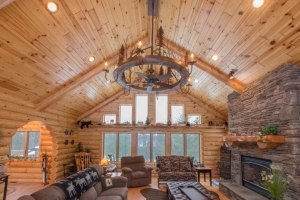 Cathedral and vaulted ceilings differ in the shapes of their upper framework and sloping sides.
Cathedral and vaulted ceilings differ in the shapes of their upper framework and sloping sides.
A cathedral ceiling has two sloping sides that follow the roof’s pitch and slant upwards to a point at the top. They are generally created by enclosing the bottoms of the roof rafters with ceiling material. Their advantages include:
- A strong visual appeal and luxurious charm
- More space for adding larger windows for more light
- Adding larger beautiful chandeliers
- Adding larger and more powerful ceiling fans
- Great for living and dining rooms
- Same advantages as vaulted ceilings
Knotty pine paneling is an ideal material for covering the bottoms of the roof rafters. If you want a natural look, then cover the wood with a clear coat finish. If you want a lighter color, stain it with a whitewash product.
Vaulted Knotty Pine Ceilings
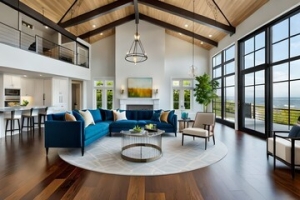 A vaulted ceiling does not follow the roof’s shape and can be symmetrical or asymmetrical. They can have multiple sides that meet at a central point and can use an arch design within the roof’s triangular pitch. These ceilings are often framed with scissor trusses and can stretch upwards from the walls using arches. Vaulted ceilings have these advantages:
A vaulted ceiling does not follow the roof’s shape and can be symmetrical or asymmetrical. They can have multiple sides that meet at a central point and can use an arch design within the roof’s triangular pitch. These ceilings are often framed with scissor trusses and can stretch upwards from the walls using arches. Vaulted ceilings have these advantages:
- Can make a home appear larger
- Take advantage of unused roof space
- Eliminate attic for more useful space
- Great choices for living rooms and dining rooms
- Allows addition of skylights
- Same advantages as cathedral ceilings
Like cathedral ceilings, use knotty pine wood as your choice of ceiling materials. It adds a homey and relaxed atmosphere to a home’s décor.
“If you have ever walked into a room with a cathedral or vaulted ceiling, you know how awesome they look.”
How Pine Ceilings Are Installed
Knotty pine ceilings can be installed standing on a ladder for the lower runs and scaffolding must be used for the higher levels. If the bottom runs are too high, use scaffolding for the entire job. Use a nail gun and the appropriate size nails for these two typical installations.
Nailed to ceiling joists – When the pine paneling runs perpendicular to the ceiling joist, nail each piece directly to the joists. The end-matching design lets you end-butt pieces anywhere between the joists. The T&G feature helps keep the pieces flat and from moving apart.
Nailed to furring strips – If it is necessary to run the boards parallel to the ceiling joists, you must nail furring strips perpendicular to the joists. This works just as well as securing them to joists or wall framing for walls.
Ceiling boards should run the same direction as the longest wall in a room. The exception is when the ceiling is arched which controls the direction of the paneling boards.
Don’t Forget The Trims And Molding
There is an assortment of trims and molding available to dress up your knotty pine ceilings. Select the ones that meet your tastes and install them after the ceilings are in place. TIP: You can speed up installing ceilings by using pre-finished knotty pine paneling boards. They arrive professionally finished and ready to nail up.
We hope these ideas are helpful in preparing your cathedral or vaulted ceilings. Knotty pine is a timeless choice you can enjoy for generations.
Resources And References:


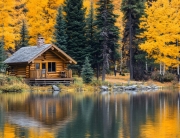
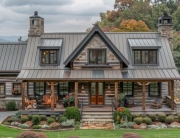
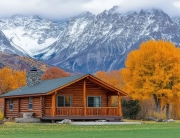
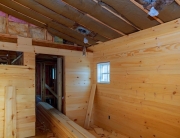
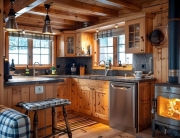
Recent Comments